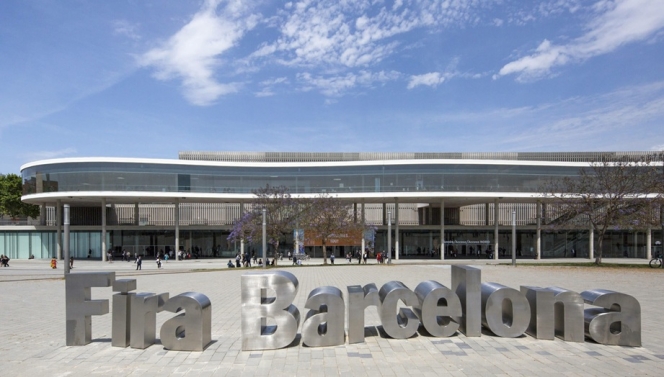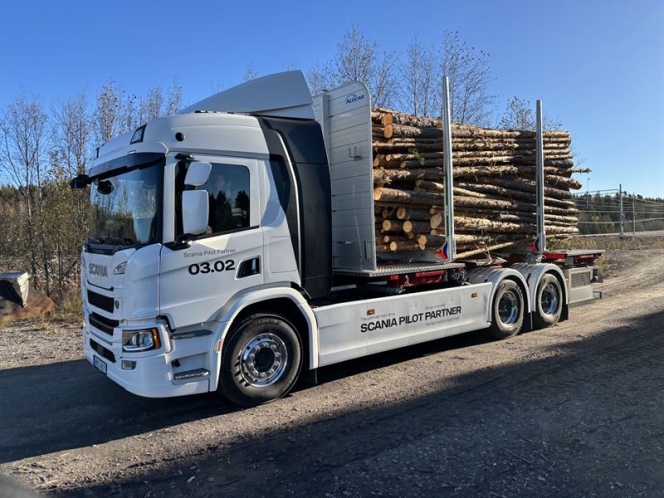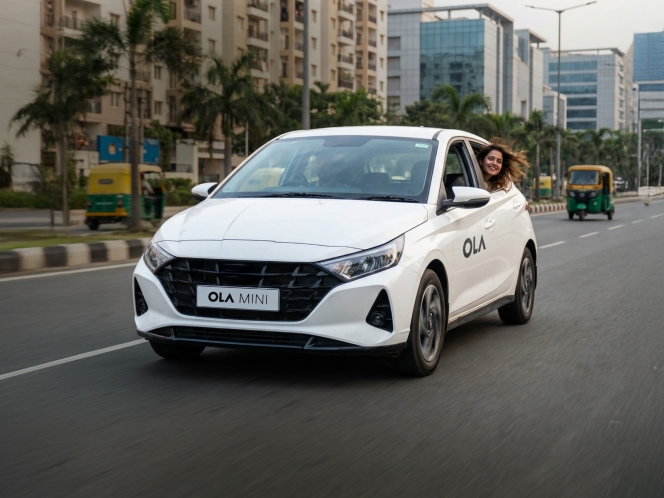- Montra Electric
- Tube Investment of India
- TII
- Murugappa Group
- electric vehicle
- electric Small Commercial Vehicle
- e-SCV
- Vellayan Subbiah
- TIVOLT Electric Vehicles
- TI Clean Mobility
Saietta’s AFT To Potentially Revolutionise Electric Two-wheelers In India
- By Venkatesh P Koushik and Sharad P Matade
- June 22, 2021

After four years of intense research and development, Saietta is ready to revolutionise the Indian market with its new partnership with Padmini VNA. The company’s patent-pending Axial Flux Technology (AFT), with liquid cooling, aims to replace the 110 cc IC engines in motorcycles in the country. We talk to Wicher Kist, CEO and Graham Lenden, Chief Commercial Officer of Saietta, to know more about the AFT technology and the company’s plans for the country.
How do you evaluate the Indian two-wheeler market?
Wicher: India’s two-wheeler market is one of the biggest opportunities on the planet. During our visits to India and China, we observed that while in Shanghai people preferred mopeds, we saw car and bike parks full of 110 cc motorbikes in India. We tried to understand his trend and set out on a mission four years ago to develop the perfect motor to replace the 110 cc engines in India. This led us to develop an efficient motor that can ultimately work with swappable batteries. We have used cheap ingredients and chosen what we believe is the right topology. Looking back at the early days of Formula E, we realised Axial Flux technology is the most efficient technology but is extremely expensive. So, Saietta went on a mission to bring AFT to the mass market, and the collaboration with Padmini VNA has assured us that we got it right. For example, if Delhi would switch to eight kilowatts electric motorbikes and scooters with the same swappable batteries, we believe that one could switch batteries for less money than what they pay for fuel per month. This technology has already been proven by Gogoro in Taiwan. The one segment where leading technology solution providers and the government need to work together is to clean up the air in large cities by building docking stations. We need docking stations on every street corner.

India doesn’t have a standard battery technology. Do you think it will be a limitation in the large scale deployment of swappable battery technology?
Wicher: I think we are three years away from achieving the standard battery technology. Companies like Sun Mobility, Greenfuel, Panasonic and many more have already started work in this regard. For example, in Japan, vehicle manufacturers are signing agreements to develop the same battery cartridges. At Saietta, we focus on providing extremely affordable eight kilowatts powertrain solutions to support the electrification with our partner Padmini in India.
Graham: We believe that the recent memorandum of understanding signed between Hero MotoCorp and Gogoro for smaller bikes will fast track the swappable battery solution for India in terms of infrastructure.
 Considering the condition of the Indian roads and the high payload Indian households carry on a motorbike, do you think there is a need to offer a customised solution for the Indian bikes?
Considering the condition of the Indian roads and the high payload Indian households carry on a motorbike, do you think there is a need to offer a customised solution for the Indian bikes?
Wicher: We have fine-tuned the motor to carry higher payloads so that Indian families can still commute like they do today.
Graham: The duty cycle of an Indian motorcycle is less than 25 kilometres in a day carrying heavy payloads in high ambient temperature. So, to answer all these criteria, we created a motor with very high torque and for the first time, with liquid cooling to help keep the motor temperature low and maintain a high continuous power. So, at Saietta, we have managed to engineer water cooling at the right price for the first time in this segment, helping us improve efficiency and allowing us to use a smaller battery to reduce weight and cost. The final thing is the price; we have been rigorous at designing the motors to be manufactured at a price suitable for the Asian market.
The low voltage is a critical aspect of these motors as we believe that these motorbikes will not be serviced by franchise trade but by individuals who are not trained in high voltage. If you deliver high-voltage motors to untrained electrical personnel to service, then you have a real safety problem on your hands. So, we’ve instead designed it at low voltage to deliver the efficiency required at a price needed while maintaining the high torque and constant power, and ease of use and maintenance.
You have moved from a DC motor to an AC motor with the second-generation AFT motor. Can you explain the changes and the advancements made with the second-generation motor?
Wicher: The first-generation DC motor was more of an industrial application motor. So, we looked at the technology and realised that the motors for the Asian market cannot have brushes given the hot climate. So, the first generation was a learning exercise, where we sold small volumes but always knew that we had to start from scratch for mass-market adaptation of AFT, which we have been doing over the last four years.
 So, you mentioned liquid cooling and the use of cheap materials. Can you elaborate on the reliability?
So, you mentioned liquid cooling and the use of cheap materials. Can you elaborate on the reliability?
Wicher: I’m a big fan of the lean principles. Eighty percent of the cost is defined on the drawing board, and we knew what the market wanted. So, we define the specification and design a product which we believe is capable of low-cost, mass market production. Reliability is number one and will always stay number one. Still, the beauty is because it’s a pancake-shaped motor, so it’s a bit bigger in diameter and a bit flatter, making it easier to integrate into a motorbike. Also, the high torque helps us delete the transmission, which reduces the overall vehicle price.
Graham: Our motors deliver the power and torque required at low rpm compared to our peers which ensures less wear and tear on the motor, helping extend its operating life, and hence reducing cost of ownership. We have developed this technology because this is fundamentally a commuter tool and reliability is key. It’s not just the low-cost materials, but it’s also the way that it goes together. We know that one can assemble this motor in a highly automated way in mass volume.
You mentioned the idea of ‘designed in the UK and manufactured in India’. Can you elaborate on your plans to produce in India?
Wicher: We plan to have a base production plan at Padmini to cater to the smaller players, but we also offer to set up mini plants for the more prominent players based on their requirements. Over the years of working in the industry, we have learnt that when a vehicle manufacturer wants our technology, we add value to them from the first meeting by working together to integrate the product into their bike and help them reduce the overall components. Then the tailor-made designs are prototyped with the demo fleets built for durability testing. Our durability centre in the UK can run the motor 24x7 to build customers’ confidence in the product, helping iron out any possible defects or reliability concerns before the product goes into production. So, in the future, the aim is to have several plants across India producing Saietta’s technology.
 We have seen multiple manufacturers moving away from conventional motors and starting development on the axial flux motors. Can you explain the recent advancements made in the axial flux technology contributing to this rise in its adaptation, and how do you plan to stay competitive with it?
We have seen multiple manufacturers moving away from conventional motors and starting development on the axial flux motors. Can you explain the recent advancements made in the axial flux technology contributing to this rise in its adaptation, and how do you plan to stay competitive with it?
Wicher: The ability of the technology to provide a better range from the same battery while being compact in size is the primary reason. At Saietta, we believe that our technology will provide the client with the most cost-effective option while taking them further down the road. This will help in the natural migration of the clients towards our technology. We recently achieved 10 percent more range from a battery pack without regen during one of the application tests. For India, we have the same plan. We are already converting a couple of bikes for a demo. These will be available at Padmini later in the year for 2-wheel OEMs to experience the advantages of our motor and our patent pending technology.
Can the AFT technology be used to create a 200-250 cc replacement motor?
Wicher: We are developing an 800 volts version for a specific client in Asia that is a similar size as an AFT 140 but making more than 160 kilowatts of power. If the client’s application wants high voltage, we can build it to make it feel like a 250 to 350 cc, but the bottleneck is often battery technology. The battery has a certain limitation on current. Therefore, the marriage between the right battery technology and the powertrain can tune the AFT 140 to make it feel like a 250 cc, while with an AFT 110, we can fine-tune it and bring the cost down further for the 110-cc market segment. If you look at the international scene, Saietta focuses on two categories: L3E (Motorcycles) and L7E (Quadricycles).
 Has the use of liquid cooling impacted the weight of the motor?
Has the use of liquid cooling impacted the weight of the motor?
Wicher: As the liquid is heavier than the air, we have observed an increase in weight, but that has not impacted the motor negatively. So, we believe that it is a good compromise to introduce liquid cooling and manage the additional weight for the longevity of the motor and the inverter. Also, an electric water pump is extremely cheap because most Asian motorcycles are already water-cooled with a small radiator and a water pump. As you know, this is also a speciality of our new partner, Padmini.
Are you going to cater to other applications as well?
Wicher: The time has arrived to think about the electrification of vehicles for agricultural and humanitarian applications. We feel that companies need to start thinking about using solar panels to replace diesel generators in the agricultural sector and help purify air quality in big cities and countries. (MT)
Battery Passport Implementation Beyond EVs To Be Focus Of Barcelona Event
- By MT Bureau
- December 03, 2025

Battery and Energy Storage Europe has announced a programme focused on the EU Battery Passport, a regulatory milestone that becomes mandatory in February 2027. The Barcelona-based event will address the compliance gap for applications beyond the electric vehicle (EV) sector, which have dominated the conversation to date.
The event, taking place on 8th and 9th September 2026 at Fira de Barcelona's Gran Via venue, will focus on solutions and talks for applications that fall within the regulation's scope: stationary energy storage, industrial batteries, grid-scale systems, long-duration energy storage and emerging applications in aerospace, maritime and rail electrification.
With the February 2027 legal requirement date approaching, the programme will bring together industry leaders, technology providers, and policy experts to address the compliance challenges facing these diverse sectors.
The Battery Passport is a digital record documenting a battery's entire lifecycle, from raw material sourcing to production, performance and eventual recycling. From February 2027, it becomes mandatory for all rechargeable EV, industrial and LMT batteries over 2 kWh sold in the EU.
Linked via QR code, the passport will track each battery's complete lifecycle, including composition, carbon footprint and recycled content, fundamentally transforming supply chain transparency and sustainability practices across Europe.
The programme will explore implementation topics including digital infrastructure requirements, data management systems, supply chain integration, verification processes and recycling traceability.
Ken Davies, Conference Programme Director at Battery and Energy Storage Europe, said, "The Battery Passport represents one of the most significant regulatory shifts our industry has faced, yet many companies are still grappling with what implementation actually means for their operations. While the EV sector has dominated the conversation, there's a critical need to address how this regulation applies to stationary storage, industrial applications and the innovative battery technologies powering Europe's energy transition. With the clock ticking toward February 2027, Battery and Energy Storage Europe will shine a light on the practical implementation requirements for these often-overlooked sectors, connecting stakeholders with actionable solutions and bringing together the expertise, technology providers, and collaborative spirit needed to turn compliance into competitive advantage across the full spectrum of battery applications."
- Scania
- Horse Powertrain
- SCA
- hybrid truck
- Aurobay Technologies
- Matias Giannini
- Tony Sandberg
- Ingo Scholten
Scania Selects Horse Powertrain For Range-Extender Truck Pilot In Sweden
- By MT Bureau
- December 03, 2025

Horse Powertrain has been selected by Scania to provide its range-extender system for a pilot vehicle, currently operating as a heavy-duty timber truck in Sweden. The collaboration is a step in testing hybrid powertrain solutions for demanding transport applications such as forestry logistics.
The pilot is part of the Scania Pilot Partner program and is currently operating in Sweden under SCA, one of Europe’s forestry companies.
The vehicle is built to handle Sweden’s timber routes, transporting heavy loads through remote terrain where access to charging infrastructure remains scarce. By combining a battery-electric drivetrain with the generator designed in Sweden by Horse Powertrain’s division Aurobay Technologies, the truck achieves both long-distance capability and reduced CO2 emissions.
The test route covers approximately 16 km, with an operational target of completing 7–8 rounds per day, comparable to a diesel truck.
The configuration supports the truck’s battery packs with a 120 kW range-extender unit based on Horse Powertrain’s 2.0 litre multi-fuel engine. Acting purely as an onboard charger, the unit supplies electric energy when required during long hauls, temperature extremes, or delays.
Matias Giannini, CEO, Horse Powertrain, said, "Forestry logistics represents one of the toughest challenges for electrification. The forest roads of northern Sweden demand strength, range and reliability. Charging stations are few, but the timber never waits. You can think of our range-extender as a powerbank for a heavy-duty truck: silent, efficient, and always there when you need it. By partnering with Scania and drawing on our engineering excellence, we’re proving how a compact, high-efficiency range-extender enables electric trucks to operate reliably in the most demanding environments. It’s a technology that cuts CO2 now.”
Tony Sandberg, Vice-President at Scania Pilot Partner, added, "What we’re doing in Sweden with Horse Powertrain and SCA builds directly on the 100-day trial we ran together with a logistics partner in Germany earlier this year. That vehicle logged almost 22,000 kilometres and drove more than 90 percent of the time on pure electric power, only using the range-extender when no charging was available. The result was a CO2 reduction of over 90 percent compared with a diesel truck. Those learnings give us a strong foundation as we tailor the system for demanding Nordic timber operations."
Ingo Scholten, Chief Technology Officer, Horse Powertrain and Managing Director Sweden, Aurobay Technologies division, said, “Electrifying heavy-duty routes means understanding what drivers and operators face hour by hour. Long stretches without charging, variable loads and rapidly changing weather. This pilot lets us study those realities directly in day-to-day timber operations. The range-extender’s role is simple. Provide a stable, efficient energy supply so drivers can complete their full shift without interruption and with far lower greenhouse-gas emissions than a traditional diesel truck. The data we gather here will guide how we refine the technology and scale it for wider use across demanding transport applications.”
Horse Powertrain’s modular range-extender architecture builds on the core technology used in its passenger-car and light-commercial hybrid systems, adapted for the higher power output and durability demands of heavy-duty applications. Unlike conventional fixed-speed generator sets, the engine can operate across its full power band, allowing the system to deliver the required output efficiently while keeping fuel consumption, noise and vibration low.
The pilot truck is now undergoing testing in regular operations, carrying full timber loads to gather performance and efficiency data in real-world conditions. The results will guide future deployments of electrified powertrains in the forestry sector and other heavy-duty applications.
Maruti Suzuki Launches One India, One EV Charging Platform
- By MT Bureau
- December 03, 2025
Maruti Suzuki India, the country’s largest passenger vehicle maker, is gearing up to mark its entry into the electric vehicle segment with the soon-to-be-introduced e Vitara has announced an EV ecosystem with a comprehensive end-to-end digital platform for charging needs, including home and public charging, with an integrated payment journey.
The company has signed collaboration agreements with 13 Charge Point Operators (CPOs) and aggregators to provide seamless charging experiences on a single platform.
Maruti Suzuki has established a network of over 2,000 exclusive charging points across its nationwide dealer network, spanning more than 1,100 cities. Customers’ charging needs are further supported by the extensive partner-operated all-India charging network.
Aligned with its global vision, Maruti Suzuki will work with its partners to enable more than 100,000 Public Charging Points by 2030.
Hisashi Takeuchi, Managing Director & CEO, Maruti Suzuki India, said, “At Maruti Suzuki, we strive to extend a delightful ownership experience to our customers to build lasting trust. Today, we are taking a historic step, as we enter the domain of electric mobility with full readiness to address the EV charging concerns and boost customer confidence. We have established a robust network of over 2,000 Maruti Suzuki exclusive charging points across our sales and service network, spanning more than 1,100 cities. Further, we have collaborated with 13 Charge Point Operators to offer access to a vast charging infrastructure across the country. Aligned with Suzuki’s global vision, we plan to introduce multiple EVs and to support this, our aim is to enable a network of over 1 lakh charging points across India by 2030, along with our Dealer and CPO partners.”
'E for Me' Digital Platform
The Maruti Suzuki ‘e for me’ EV charging mobile app enables end-to-end usage of EV charging points from partner-operated charging points and Maruti Suzuki’s own network on a single platform.
The app offers a uniform customer journey for EV charging and payment through UPI or exclusive ‘Maruti Suzuki Money’, powered by Razorpay.
The platform's functions include:
- Locate, Pay & Use EV charging points available on the app.
- Use Public and Smart Home Charger from the same app.
- One card for ‘Tap N Charge’ functionality at Maruti Suzuki dealer outlets and home charger.
- Mirror e for me app on the infotainment system for seamless in-car EV charging experience.
- Remotely start/stop and manage the power output of the smart home charger.
Partho Banerjee, Senior Executive Officer, Marketing & Sales, Maruti Suzuki India, said, “Today is the dawn of a new era for electric mobility in India. It gives me immense pleasure to say that Maruti Suzuki is EV ready and will be ‘By Your Side’ with our comprehensive new platform that addresses key concerns around EV charging infrastructure. Leveraging India’s largest dealer network and our charging partners’ network, we are ensuring there are EV charging points at an average distance of 5-10 kilometres at key locations in the top 100 cities of India. DC fast chargers are also located at regular intervals along key highways to enable nationwide driving freedom for our prospective EV customers. To further enhance peace of mind, we have deployed a 1.5 lakh-strong specially-trained EV workforce to cater to every need of our customers. We have also activated 1500+ EV-ready service workshops across 1100 cities for meeting after-sales requirements to support EV ownership in every part of the country.”
To showcase the network readiness, four e VITARAs were flagged off from Gurugram in all four directions – Srinagar (North), Kanyakumari (South), Bhuj (West) and Dibrugarh (East) – as a part of the ‘e drive’.
The e Vitara Born EV, which is ‘Made-in-India and exported around the world,’ has been rigorously tested over 10 million test kilometres. Tested from ‘Sand to Snow’ over a temperature spectrum of 60deg Celsius to -30deg Celsius, the e Vitara has delivered a driving range of 543 km.
Banerjee added: “Words aside, we are showcasing the prowess of this platform by flagging off a radical ‘e drive’ that will demonstrate the real-world efficacy of Maruti Suzuki’s comprehensive EV charging network. With the ‘e drive’, we aim to boost user confidence and execute faster EV adoption, working alongside the nation’s sustainability goals for net zero.”
Ola Intros Non-AC Cab Options On Its Platform Across India
- By MT Bureau
- December 02, 2025

Bengaluru-based ride-hailing company Ola Consumer has launched its non-AC ride category across India, becoming the only player in the country to offer this option at scale.
The company stated that the goal is to offer customers maximum choice across various price points to meet their travel needs. The new category will also enable cab drivers to have lower fuel consumption and improve their earnings.
Ola Consumer spokesperson said: “With the non-AC category, we’re pushing the boundaries of how affordable and accessible urban mobility can be in India. Millions of people rely on daily, value-driven transport, and this offering is built entirely around their needs. The early response has been incredible and shows how strongly India wants more transparent, flexible, and fairly priced mobility. This move marks a step ahead in our mission to rethink mobility in India, and make it truly inclusive for every consumer.”






Comments (0)
ADD COMMENT